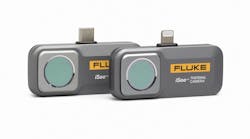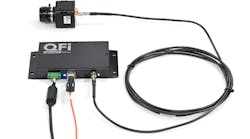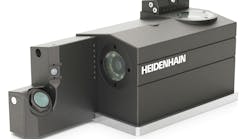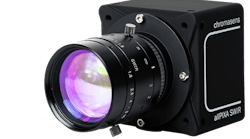Monitoring, Live Streaming uEye Live Camera Series
IDS Imaging Development Systems has launched the uEye Live camera series with the uEye SCP and uEye SLE product lines. They specialize in monitoring tasks, deliver various live streams, and even allow event recording.
The GigE cameras are designed for standalone operation. In addition to easy access via the web front end (HTTP), users benefit from video streaming, hardware-accelerated video encoding, and event-based recording in the camera memory. This means that if an incident occurs, the cameras provide a valuable "window into the past". The cameras are used as a single-device solution, for example in process monitoring.
Users can choose from different design variants: the uEye SCP series has a completely closed, 29x29x29 mm housing. The uEye SLE line consists of board-level models for embedded applications with different mounting options. As of now, the first uEye SCP camera with the 8.3 MP rolling shutter sensor IMX678 from the Sony Starvis 2 series is available. The board-level version and additional sensors will follow in 2025.
They can deliver multiple video streams at the same time, and thanks to Sony Starvis 2 technology, they provide impressive image quality in low-light situations. The integrated ISP with automatic image enhancement features also plays an important role in this.
The use of modern edge technology with an efficient SoC from Ambarella allows the camera to directly edit, process, filter, or evaluate image data. Instead of sending single raw images, the camera transmits up to three parallel video streams, either compressed via RTSP protocol and H264 or via HTTP in MJPEG format directly to various end devices. A PC is not required for camera operation. The camera therefore fulfills various requirements, such as live monitoring, detailed post-analysis, and integration into different systems.
The camera enables decentralized recording of video sequences in the internal persistent memory, triggered by a software command or a trigger line. Depending on the configuration, the seconds before, during, and after an event are captured. This function allows complete documentation of machine malfunctions or failures. As a result, potential process errors can be analyzed and possible reasons identified.
The integrated ISP (Image Signal Processor) ensures optimum image quality at all times thanks to a variety of image enhancement algorithms, such as auto exposure and auto white balance, HDR, and defect pixel correction. These algorithms automatically adapt the video content to different environmental conditions and optimize it specifically for visual observation by human eyes.
In total, there are three parallel streams available. In addition to H264, the models also offer MJPEG via HTTP, which enables direct display in the web browser without additional plug-ins or third-party software. The RTSP protocol ensures standardized integration of H264 streams into existing tools and applications. Thanks to a web-based REST API, the cameras can be easily integrated into machine control systems.
Features:
- IP network cameras with RTSP and HTTP streams
- No programming required for function and integration
- Easily configurable via web interface in any browser
- Low-light performance with Sony Starvis 2 technology
- Great image quality through ISP image enhancement functions
- Event recording in the camera memory
IDS Imaging Development Systems, Inc.
Stoneham, MA
[email protected]
ids-imaging.us






